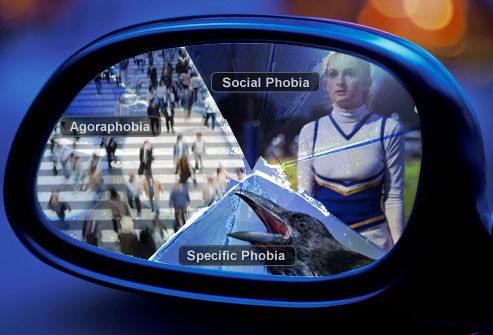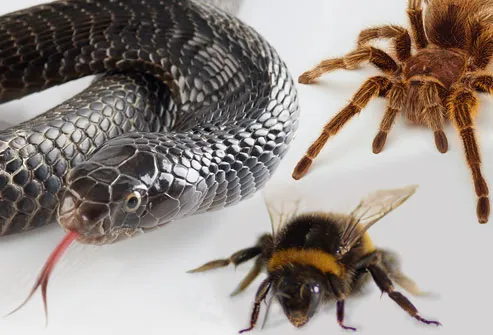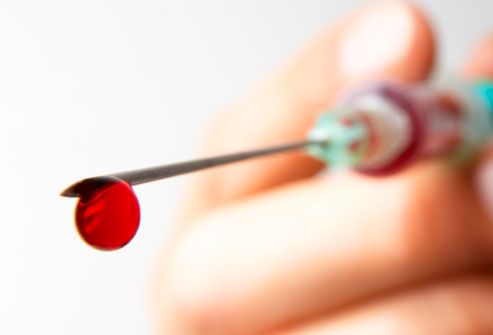What Are the Risk Factors for Breast Cancer ?
A risk factor is anything that affects your chance of getting a disease, such as cancer. Different cancers have different risk factors. For example, exposing skin to strong sunlight is a risk factor for skin cancer. Smoking is a risk factor for cancers of the lung, mouth, larynx (voice box), bladder, kidney, and several other organs.
But risk factors don't tell us everything. Having a risk factor, or even several, does not mean that you will get the disease. Most women who have one or more breast cancer risk factors never develop the disease, while many women with breast cancer have no apparent risk factors (other than being a woman and growing older). Even when a woman with risk factors develops breast cancer, it is hard to know just how much these factors may have contributed to her cancer.
There are different kinds of risk factors. Some factors, like a person's age or race, can't be changed. Others are linked to cancer-causing factors in the environment. Still others are related personal behaviors, such as smoking, drinking, and diet. Some factors influence risk more than others, and your risk for breast cancer can change over time, due to factors such as aging or lifestyle.
Risk factors you cannot change
Gender
Simply being a woman is the main risk factor for developing breast cancer. Although women have many more breast cells than men, the main reason they develop more breast cancer is because their breast cells are constantly exposed to the growth-promoting effects of the female hormones estrogen and progesterone. Men can develop breast cancer, but this disease is about 100 times more common among women than men.
Aging
Your risk of developing breast cancer increases as you get older. About 1 out of 8 invasive breast cancers are found in women younger than 45, while about 2 out of 3 invasive breast cancers are found in women age 55 or older.
Genetic risk factors
About 5% to 10% of breast cancer cases are thought to be hereditary, resulting directly from gene defects (called
mutations) inherited from a parent. See the section, "
Do we know what causes breast cancer?" for more information about genes and DNA.
BRCA1 and BRCA2: The most common cause of hereditary breast cancer is an inherited mutation in the BRCA1 and BRCA2 genes. In normal cells, these genes help prevent cancer by making proteins that help keep the cells from growing abnormally. If you have inherited a mutated copy of either gene from a parent, you have a high risk of developing breast cancer during your lifetime. The risk may be as high as 80% for members of some families with BRCA mutations. These cancers tend to occur in younger women and are more often bilateral (in both breasts) than cancers in women who are not born with one of these gene mutations. Women with these inherited mutations also have an increased risk for developing other cancers, particularly ovarian cancer.
Although in the U.S., BRCA mutations are found most often in Jewish women of Ashkenazi (Eastern Europe) origin, they can occur in any racial or ethnic group.
Changes in other genes: Other gene mutations can also lead to inherited breast cancers. These gene mutations are much rarer and often do not increase the risk of breast cancer as much as the BRCA genes. They are not frequent causes of inherited breast cancer.
- ATM: The ATM gene normally helps repair damaged DNA. Inheriting 2 abnormal copies of this gene causes the disease ataxia-telangiectasia. Inheriting one mutated copy of this gene has been linked to a high rate of breast cancer in some families.
- p53: Inherited mutations of the p53 tumor suppressor gene cause the Li-Fraumeni syndrome (named after the 2 researchers who first described it). People with this syndrome have an increased the risk of developing breast cancer, as well as several other cancers such as leukemia, brain tumors, and sarcomas (cancer of bones or connective tissue). This is a rare cause of breast cancer.
- CHEK2: The Li-Fraumeni syndrome can also be caused by inherited mutations in the CHEK2 gene. Even when it does not cause this syndrome, it can increase breast cancer risk about twofold when it is mutated.
- PTEN: The PTEN gene normally helps regulate cell growth. Inherited mutations in this gene cause Cowden syndrome, a rare disorder in which people are at increased risk for both benign and malignant breast tumors, as well as growths in the digestive tract, thyroid, uterus, and ovaries.
- CDH1: Inherited mutations in this gene cause hereditary diffuse gastric cancer, a syndrome in which people develop a rare type of stomach cancer at an early age. Women with mutations in this gene also have an increased risk of invasive lobular breast cancer.
Genetic testing: Genetic tests can be done to look for mutations in the BRCA1 and BRCA2 genes (or less commonly in other genes such as PTEN or p53). Although testing may be helpful in some situations, the pros and cons need to be considered carefully. For more information, see the section "
Can breast cancer be prevented?"
Family history of breast cancer
Breast cancer risk is higher among women whose close blood relatives have this disease.
Having one first-degree relative (mother, sister, or daughter) with breast cancer approximately doubles a woman's risk. Having 2 first-degree relatives increases her risk about 5-fold.
Although the exact risk is not known, women with a family history of breast cancer in a father or brother also have an increased risk of breast cancer. Altogether, about 20% to 30% of women with breast cancer have a family member with this disease. This means that most (70% to 80%) women who get breast cancer
do not have a family history of this disease.)
Personal history of breast cancer
A woman with cancer in one breast has a 3- to 4-fold increased risk of developing a new cancer in the other breast or in another part of the same breast. This is different from a recurrence (return) of the first cancer.
Race and ethnicity
White women are slightly more likely to develop breast cancer than are African-American women. African-American women are more likely to die of this cancer. At least part of this seems to be because African-American women tend to have more aggressive tumors, although why this is the case is not known. Asian, Hispanic, and Native-American women have a lower risk of developing and dying from breast cancer.
Dense breast tissue
Women with denser breast tissue (as seen on a mammogram) have more glandular tissue and less fatty tissue, and have a higher risk of breast cancer. Unfortunately, dense breast tissue can also make it harder for doctors to spot problems on mammograms.
Certain benign breast conditions
Women diagnosed with certain benign breast conditions may have an increased risk of breast cancer. Some of these conditions are more closely linked to breast cancer risk than others. Doctors often divide benign breast conditions into 3 general groups, depending on how they affect this risk.
Non-proliferative lesions: These conditions are not associated with overgrowth of breast tissue. They do not seem to affect breast cancer risk, or if they do, it is to a very small extent. They include:
- fibrocystic disease (fibrosis and/or cysts)
- mild hyperplasia
- adenosis (non-sclerosing)
- simple fibroadenoma
- phyllodes tumor (benign)
- a single papilloma
- fat necrosis
- mastitis
- duct ectasia
- other benign tumors (lipoma, hamartoma, hemangioma, neurofibroma)
Proliferative lesions without atypia: These conditions show excessive growth of cells in the ducts or lobules of the breast tissue. They seem to raise a woman's risk of breast cancer slightly (1½ to 2 times normal). They include:
- usual ductal hyperplasia (without atypia)
- complex fibroadenoma
- sclerosing adenosis
- several papillomas or papillomatosis
- radial scar
Proliferative lesions with atypia: In these conditions, there is excessive growth of cells in the ducts or lobules of the breast tissue, and the cells no longer appear normal. They have a stronger effect on breast cancer risk, raising it 4 to 5 times higher than normal. They include:
- atypical ductal hyperplasia (ADH)
- atypical lobular hyperplasia (ALH)
Women with a family history of breast cancer and either hyperplasia or atypical hyperplasia have an even higher risk of developing a breast cancer.
For more information on these conditions, see the separate American Cancer Society document,
Non-cancerous Breast Conditions.
Lobular carcinoma in situ
Women with lobular carcinoma in situ (LCIS) have a 7- to 11-fold increased risk of developing cancer in either breast.
Menstrual periods
Women who have had more menstrual cycles because they started menstruating at an early age (before age 12) and/or went through menopause at a later age (after age 55) have a slightly higher risk of breast cancer. This may be related to a higher lifetime exposure to the hormones estrogen and progesterone.
Previous chest radiation
Women who, as children or young adults, had radiation therapy to the chest area as treatment for another cancer (such as Hodgkin disease or non-Hodgkin lymphoma) are at significantly increased risk for breast cancer. This varies with the patient's age when they had radiation. If chemotherapy was also given, it may have stopped ovarian hormone production for some time, lowering the risk. The risk of developing breast cancer from chest radiation is highest if the radiation was given during adolescence, when the breasts were still developing. Radiation treatment after age 40 does not seem to increase breast cancer risk.
Diethylstilbestrol exposure
From the 1940s through the 1960s some pregnant women were given the drug diethylstilbestrol (DES) because it was thought to lower their chances of miscarriage (losing the baby). These women have a slightly increased risk of developing breast cancer. Women whose mothers took DES during pregnancy may also have a slightly higher risk of breast cancer. For more information on DES see the separate American Cancer Society document,
DES Exposure: Questions and Answers.
Lifestyle-related factors and breast cancer risk
Not having children, or having them later in life
Women who have had no children or who had their first child after age 30 have a slightly higher breast cancer risk. Having many pregnancies and becoming pregnant at a young age reduce breast cancer risk. Pregnancy reduces a woman's total number of lifetime menstrual cycles, which may be the reason for this effect.
Recent oral contraceptive use
Studies have found that women using oral contraceptives (birth control pills) have a slightly greater risk of breast cancer than women who have never used them. This risk seems to decline back to normal over time once the pills are stopped. Women who stopped using oral contraceptives more than 10 years ago do not appear to have any increased breast cancer risk. When thinking about using oral contraceptives, women should discuss their other risk factors for breast cancer with their health care team.
Using post-menopausal hormone therapy
Post-menopausal hormone therapy (PHT), also known as
hormone replacement therapy (HRT) and
menopausal hormone therapy (MHT), has been used for many years to help relieve symptoms of menopause and to help prevent osteoporosis (thinning of the bones). Earlier studies suggested it might have other health benefits as well, but these benefits have not been found in more recent, better designed studies.
There are 2 main types of PHT. For women who still have a uterus (womb), doctors generally prescribe estrogen and progesterone (known as
combined PHT). Because estrogen alone can increase the risk of cancer of the uterus, progesterone is added to help prevent this. For women who no longer have a uterus (those who've had a hysterectomy), estrogen alone can be prescribed. This is commonly known as estrogen replacement therapy (ERT).
Combined PHT: Use of combined post-menopausal hormone therapy increases the risk of getting breast cancer. It may also increase the chances of dying from breast cancer. This increase in risk can be seen with as little as 2 years of use. Large studies have found that there is an increased risk of breast cancer related to the use of combined PHT. Combined PHT also increases the likelihood that the cancer may be found at a more advanced stage, possibly because it reduces the effectiveness of mammograms.
The increased risk from combined PHT appears to apply only to current and recent users. A woman's breast cancer risk seems to return to that of the general population within 5 years of stopping combined PHT.
ERT: The use of estrogen alone after menopause does not appear to increase the risk of developing breast cancer significantly, if at all. But when used long term (for more than 10 years), ERT has been found to increase the risk of ovarian and breast cancer in some studies.
At this time there appear to be few strong reasons to use post-menopausal hormone therapy (combined PHT or ERT), other than possibly for the short-term relief of menopausal symptoms. Along with the increased risk of breast cancer, combined PHT also appears to increase the risk of heart disease, blood clots, and strokes. It does lower the risk of colorectal cancer and osteoporosis, but this must be weighed against possible harm, and it should be noted that there are other effective ways to prevent osteoporosis. Although ERT does not seem to have much effect on breast cancer risk, it does increase the risk of stroke. The increased risk of hormone replacement therapy is the same for "bioidentical" and "natural" hormones as it is for synthetic hormones.
The decision to use PHT should be made by a woman and her doctor after weighing the possible risks and benefits (including the severity of her menopausal symptoms), and considering her other risk factors for heart disease, breast cancer, and osteoporosis. If a woman and her doctor decide to try PHT for symptoms of menopause, it is usually best to use it at the lowest dose that works for her and for as short a time as possible.
Not breast-feeding
Some studies suggest that breast-feeding may slightly lower breast cancer risk, especially if breast-feeding is continued for 1½ to 2 years. But this has been a difficult area to study, especially in countries such as the United States, where breast-feeding for this long is uncommon.
The explanation for this possible effect may be that breast-feeding reduces a woman's total number of lifetime menstrual cycles (similar to starting menstrual periods at a later age or going through early menopause).
Alcohol
Use of alcohol is clearly linked to an increased risk of developing breast cancer. The risk increases with the amount of alcohol consumed. Compared with non-drinkers, women who consume 1 alcoholic drink a day have a very small increase in risk. Those who have 2 to 5 drinks daily have about 1½ times the risk of women who drink no alcohol. Excessive alcohol use is also known to increase the risk of developing cancers of the mouth, throat, esophagus, and liver. The American Cancer Society recommends that women limit their consumption of alcohol to no more than one drink a day.
Being overweight or obese
Being overweight or obese has been found to increase breast cancer risk, especially for women after menopause. Before menopause your ovaries produce most of your estrogen, and fat tissue produces a small amount of estrogen. After menopause (when the ovaries stop making estrogen), most of a woman's estrogen comes from fat tissue. Having more fat tissue after menopause can increase your chance of getting breast cancer by raising estrogen levels.
The connection between weight and breast cancer risk is complex, however. For example, the risk appears to be increased for women who gained weight as an adult but may not be increased among those who have been overweight since childhood. Also, excess fat in the waist area may affect risk more than the same amount of fat in the hips and thighs. Researchers believe that fat cells in various parts of the body have subtle differences that may explain this.
The American Cancer Society recommends you maintain a healthy weight throughout your life by balancing your food intake with physical activity and avoiding excessive weight gain.
Lack of physical activity
Evidence is growing that physical activity in the form of exercise reduces breast cancer risk. The main question is how much exercise is needed. In one study from the Women's Health Initiative (WHI) as little as 1.25 to 2.5 hours per week of brisk walking reduced a woman's risk by 18%. Walking 10 hours a week reduced the risk a little more.
To reduce your risk of breast cancer, the American Cancer Society recommends 45 to 60 minutes of intentional physical activity 5 or more days a week.
Factors with uncertain, controversial, or unproven effect on breast cancer risk
High-fat diets
Studies of fat in the diet have not clearly shown that this is a breast cancer risk factor.
Most studies have found that breast cancer is less common in countries where the typical diet is low in total fat, low in polyunsaturated fat, and low in saturated fat. On the other hand, many studies of women in the United States have not found breast cancer risk to be related to dietary fat intake. Researchers are still not sure how to explain this apparent disagreement. Studies comparing diet and breast cancer risk in different countries are complicated by other differences (such as activity level, intake of other nutrients, and genetic factors) that might also alter breast cancer risk.
More research is needed to better understand the effect of the types of fat eaten on breast cancer risk. But it is clear that calories do count, and fat is a major source of these. High-fat diets can lead to being overweight or obese, which is a breast cancer risk factor. A diet high in fat has also been shown to influence the risk of developing several other types of cancer, and intake of certain types of fat is clearly related to heart disease risk.
The American Cancer Society recommends eating a healthy diet with an emphasis on plant sources. This includes eating 5 or more servings of vegetables and fruits each day, choosing whole grains over those that are processed (refined), and limiting consumption of processed and red meats.
Antiperspirants
Internet e-mail rumors have suggested that chemicals in underarm antiperspirants are absorbed through the skin, interfere with lymph circulation, cause toxins to build up in the breast, and eventually lead to breast cancer. There is very little laboratory or population-based evidence to support this rumor.
One small study has found trace levels of parabens (used as preservatives in antiperspirants and other products), which have weak estrogen-like properties, in a small sample of breast cancer tumors. However, the study did not look at whether parabens caused the tumors. This was a preliminary finding, and more research is needed to determine what effect, if any, parabens may have on breast cancer risk. On the other hand, a large study of breast cancer causes found no increase in breast cancer in women who used underarm antiperspirants and/or shaved their underarms.
Bras
Internet e-mail rumors and at least one book have suggested that bras cause breast cancer by obstructing lymph flow. There is no good scientific or clinical basis for this claim. Women who do not wear bras regularly are more likely to be thinner, which would probably contribute to any perceived difference in risk.
Induced abortion
Several studies have provided very strong data that neither induced abortions nor spontaneous abortions (miscarriages) have an overall effect on the risk of breast cancer. For more detailed information, see the separate American Cancer Society document,
Is Abortion Linked to Breast Cancer?
Breast implants
Several studies have found that breast implants do not increase breast cancer risk, although silicone breast implants can cause scar tissue to form in the breast. Implants make it harder to see breast tissue on standard mammograms, but additional x-ray pictures called implant displacement views can be used to examine the breast tissue more completely.
Chemicals in the environment
A great deal of research has been reported and more is being done to understand possible environmental influences on breast cancer risk.
Of special interest are compounds in the environment that have been found in lab studies to have estrogen-like properties, which could in theory affect breast cancer risk. For example, substances found in some plastics, certain cosmetics and personal care products, pesticides (such as DDE), and PCBs (polychlorinated biphenyls) seem to have such properties.
Although this issue understandably invokes a great deal of public concern, at this time research does not show a clear link between breast cancer risk and exposure to these substances. Unfortunately, studying such effects in humans is difficult. More research is needed to better define the possible health effects of these and similar substances.
Tobacco smoke
Most studies have found no link between cigarette smoking and breast cancer. Although some studies have suggested smoking increases the risk of breast cancer, this remains controversial.
An active focus of research is whether secondhand smoke increases the risk of breast cancer. Both mainstream and secondhand smoke contain chemicals that, in high concentrations, cause breast cancer in rodents. Chemicals in tobacco smoke reach breast tissue and are found in breast milk.
The evidence on secondhand smoke and breast cancer risk in human studies is controversial, at least in part because smokers have not been shown to be at increased risk. One possible explanation for this is that tobacco smoke may have different effects on breast cancer risk in smokers and in those who are just exposed to smoke.
A report from the California Environmental Protection Agency in 2005 concluded that the evidence about secondhand smoke and breast cancer is "consistent with a causal association" in younger, mainly premenopausal women. The 2006 US Surgeon General's report,
The Health Consequences of Involuntary Exposure to Tobacco Smoke, concluded that there is "suggestive but not sufficient" evidence of a link at this point. In any case, this possible link to breast cancer is yet another reason to avoid secondhand smoke.
Night work
Several studies have suggested that women who work at night -- for example, nurses on a night shift -- may have an increased risk of developing breast cancer. This is a fairly recent finding, and more studies are looking at this issue. Some researchers think the effect may be due to changes in levels of melatonin, a hormone whose production is affected by the body's exposure to light, but other hormones are also being studied.




 Zoophobia: A Menagerie of Fears
Zoophobia: A Menagerie of Fears Brontophobia: Fear of Thunder
Brontophobia: Fear of Thunder Acrophobia: Fear of Heights
Acrophobia: Fear of Heights Aerophobia: Afraid to Fly
Aerophobia: Afraid to Fly There is a spectrum of blood, injection, and injury phobias including hemophobia (fear of blood) and trypanophobia (fear of receiving an injection). Some people have an injury phobia, and others have a phobia about invasive medical procedures. These are the only phobias that are associated with fainting. A drop in blood pressure is common when encountering these situations, but in people with these phobias the drop is extreme.
There is a spectrum of blood, injection, and injury phobias including hemophobia (fear of blood) and trypanophobia (fear of receiving an injection). Some people have an injury phobia, and others have a phobia about invasive medical procedures. These are the only phobias that are associated with fainting. A drop in blood pressure is common when encountering these situations, but in people with these phobias the drop is extreme. Some phobias sound like they belong on the chiller channel on cable TV. Triskaidekaphobia is an abnormal fear of anything related to the number 13. If the thought of ghosts makes you overly anxious, you may have phasmophobia. And despite the fact that vampires aren't real, some people are terrified of bats. Their phobia is called chiroptophobia.
Some phobias sound like they belong on the chiller channel on cable TV. Triskaidekaphobia is an abnormal fear of anything related to the number 13. If the thought of ghosts makes you overly anxious, you may have phasmophobia. And despite the fact that vampires aren't real, some people are terrified of bats. Their phobia is called chiroptophobia. Emetophobia: A Gut Feeling
Emetophobia: A Gut Feeling Carcinophobia: Fear of Cancer
Carcinophobia: Fear of Cancer Phobias from New to Old
Phobias from New to Old Life-Altering Effects of Phobias
Life-Altering Effects of Phobias Phobias and Alcohol
Phobias and Alcohol A Family Connection
A Family Connection Learn More About Phobias
Learn More About Phobias







